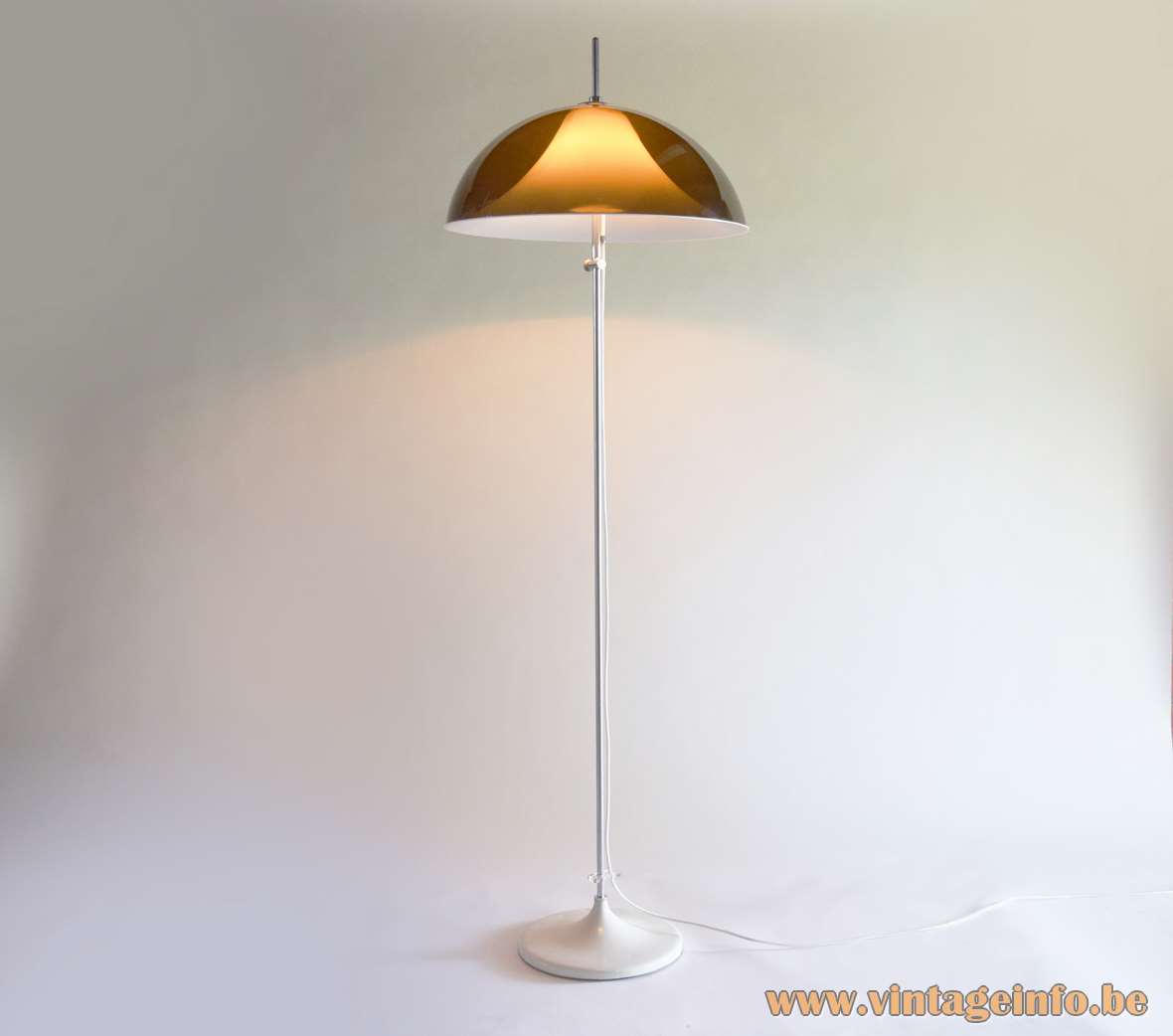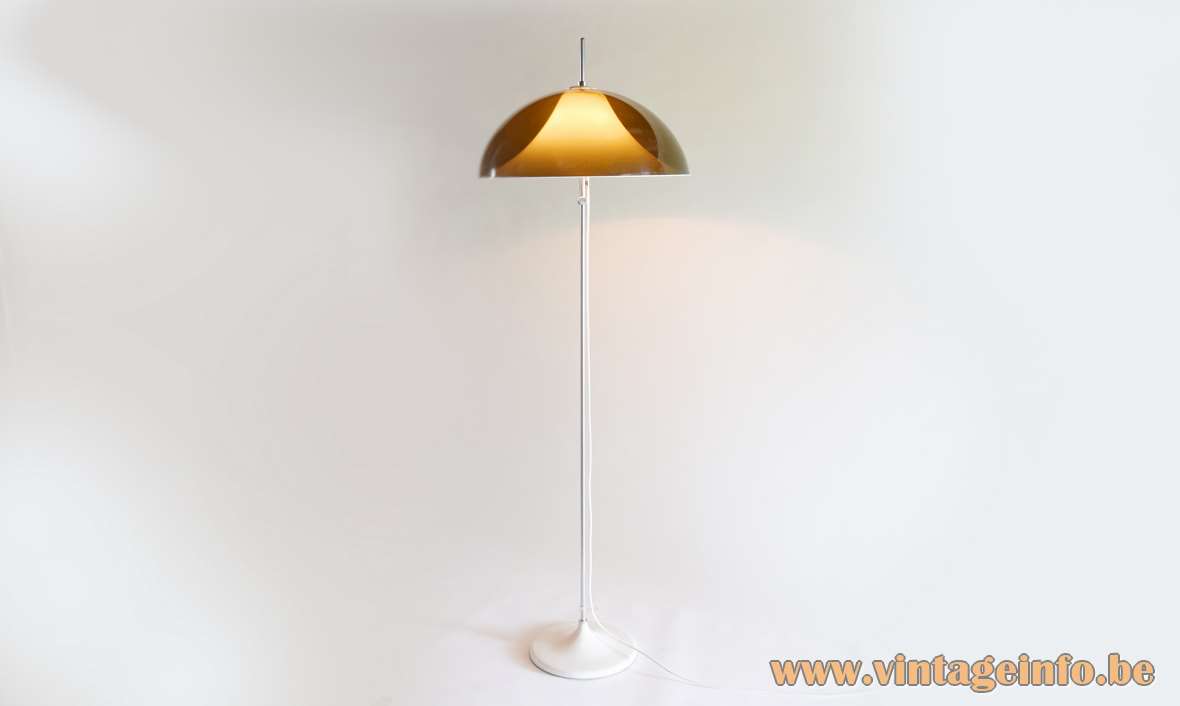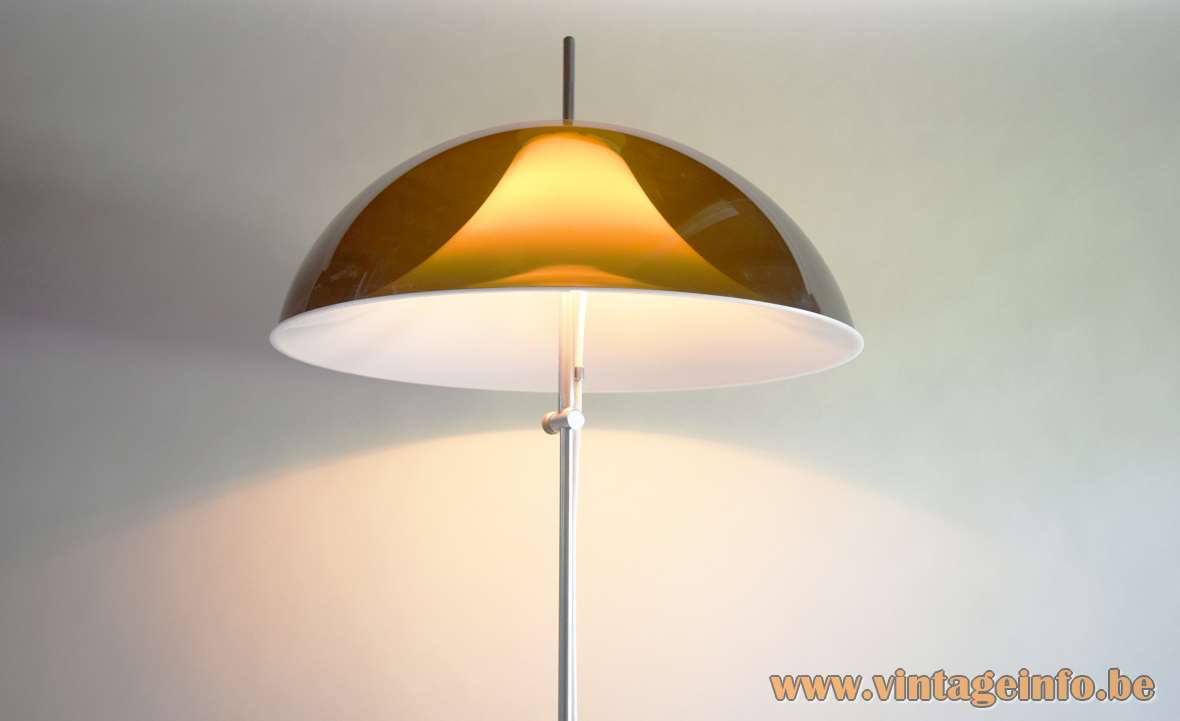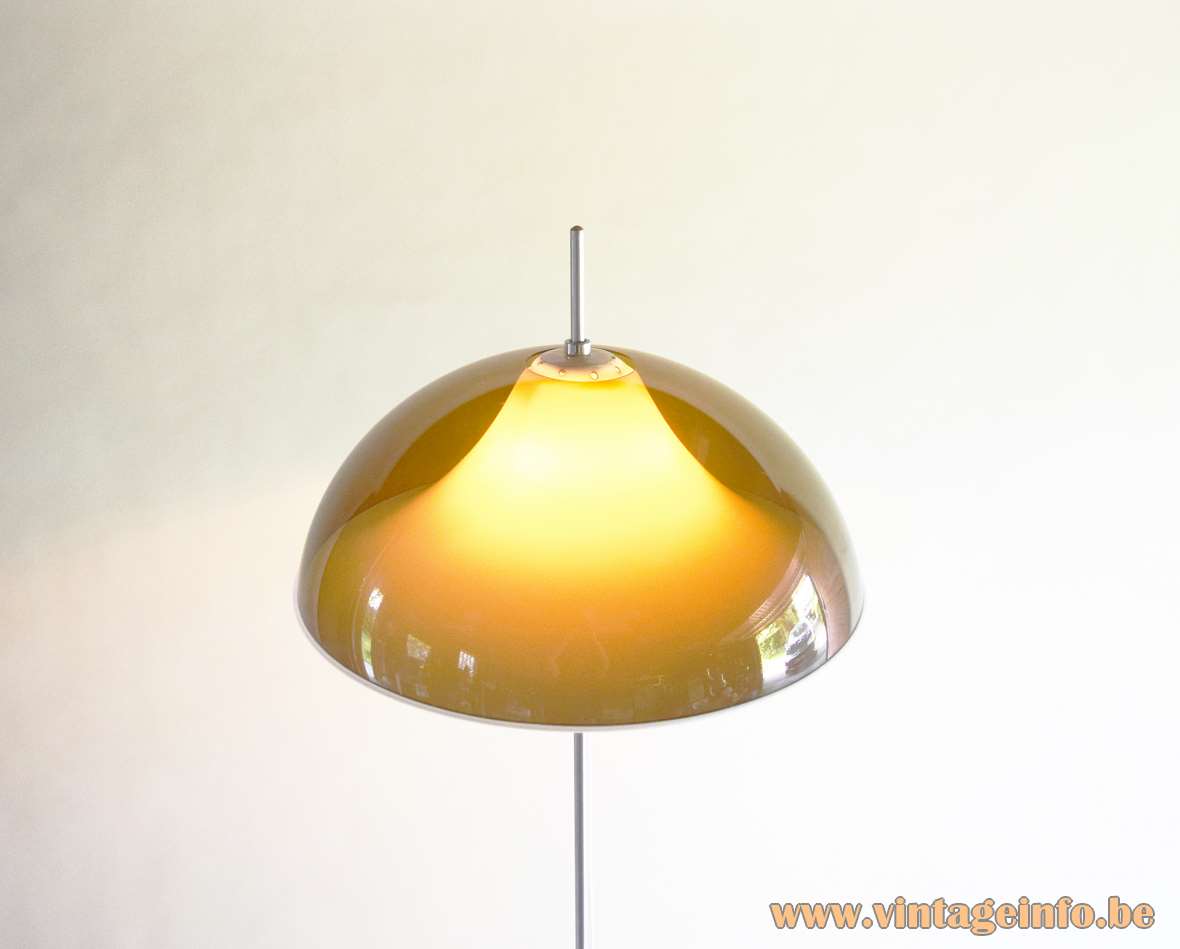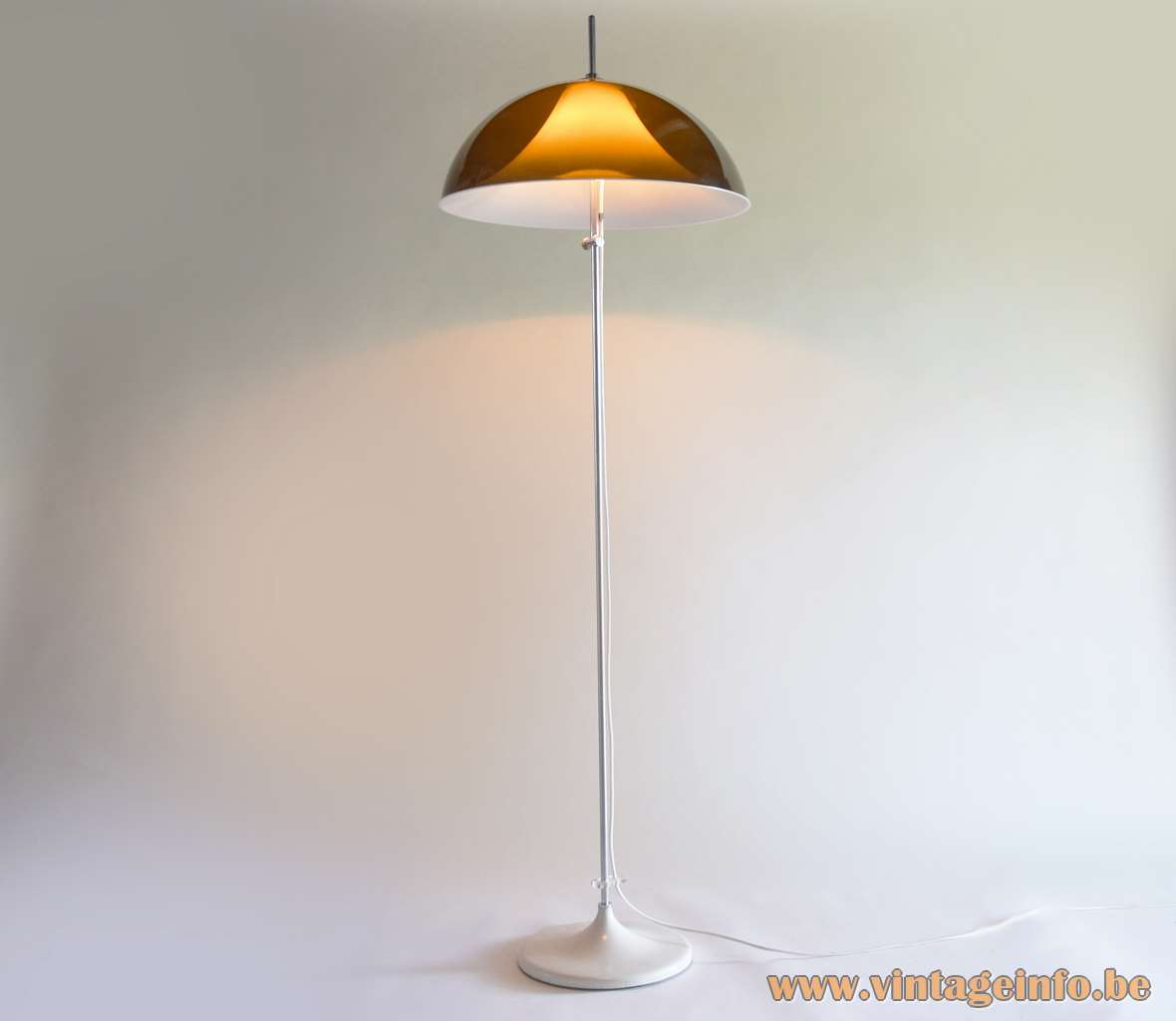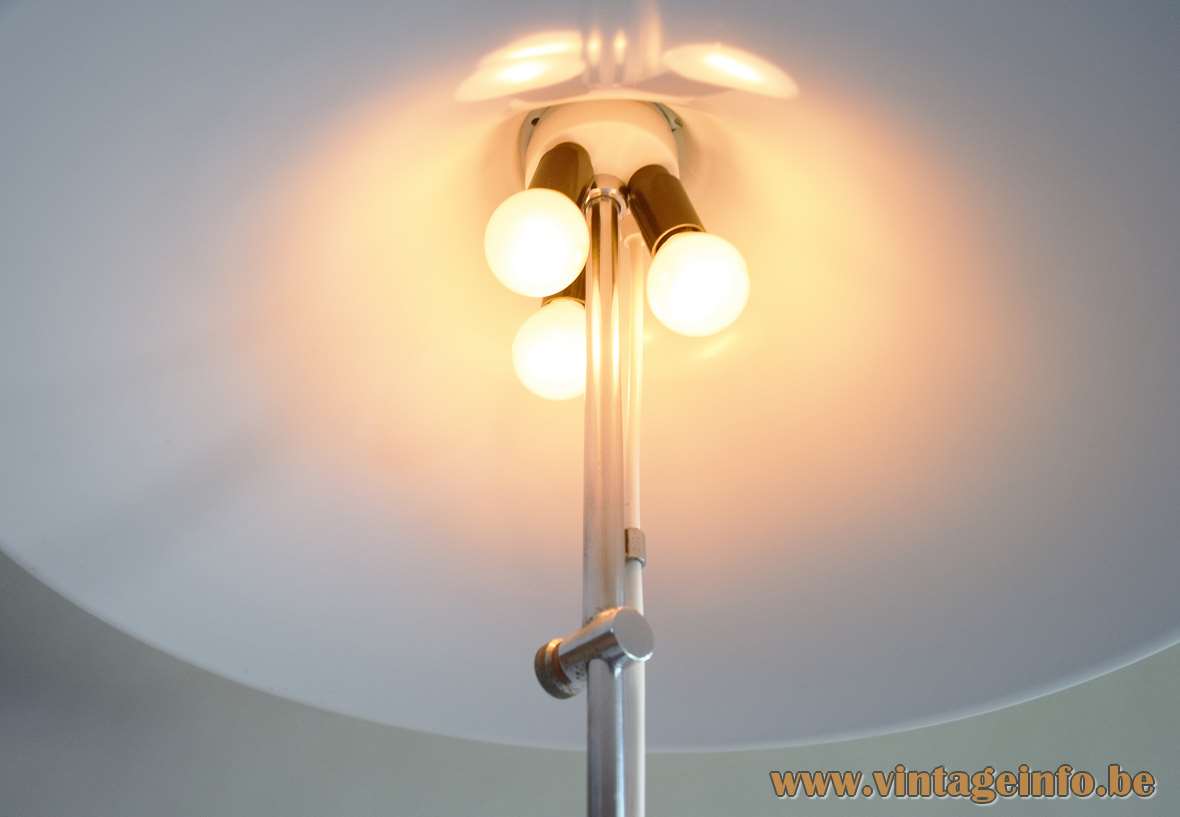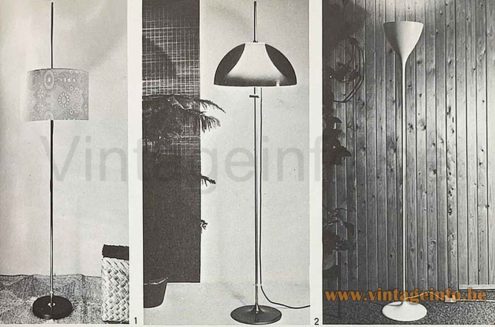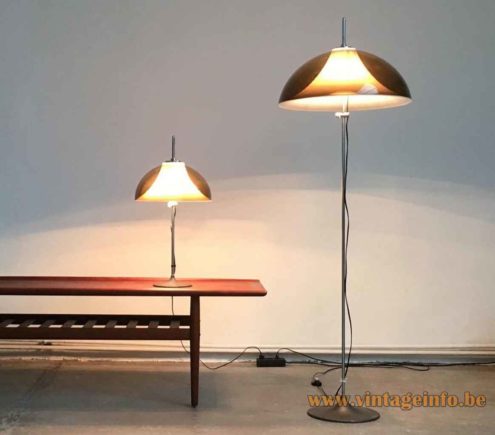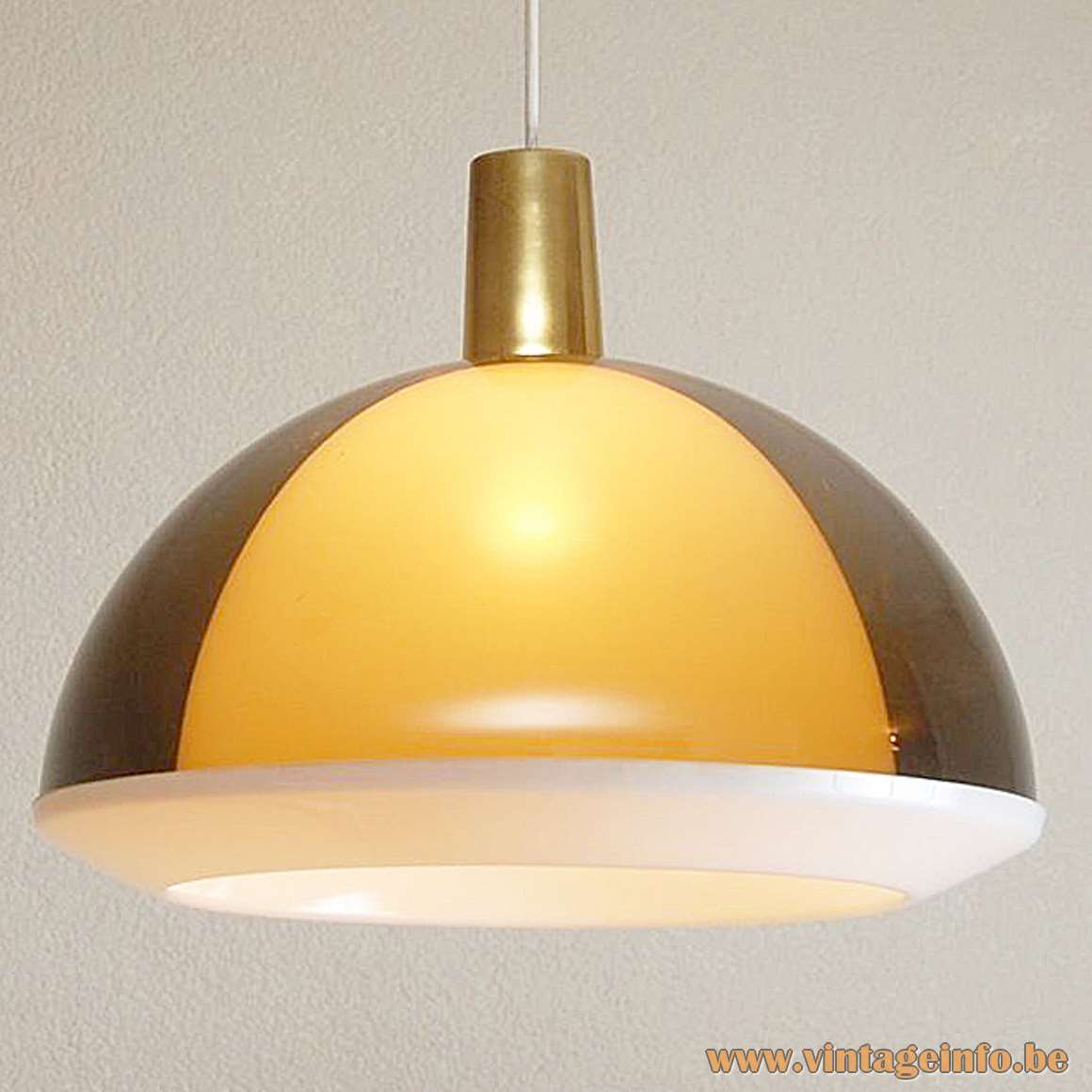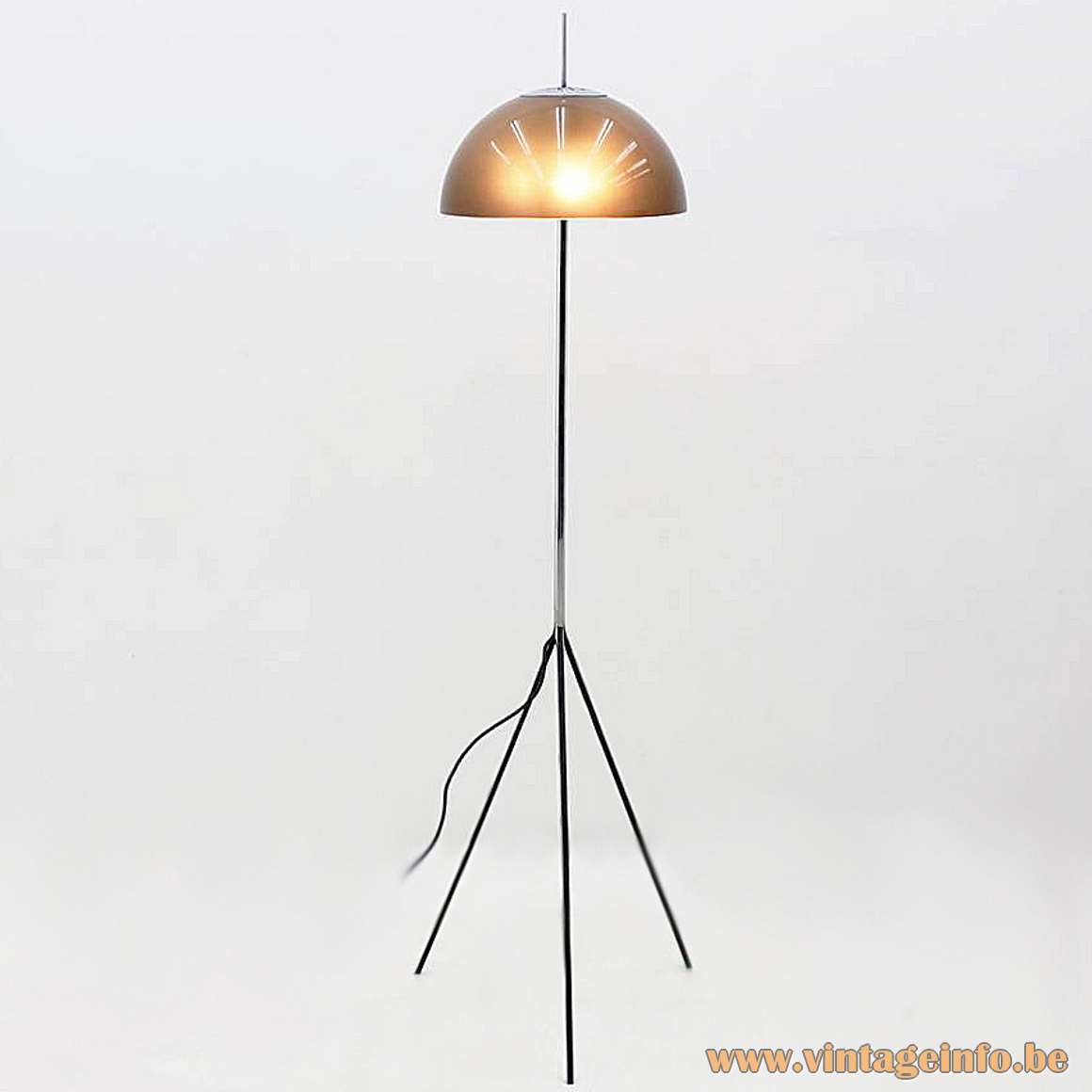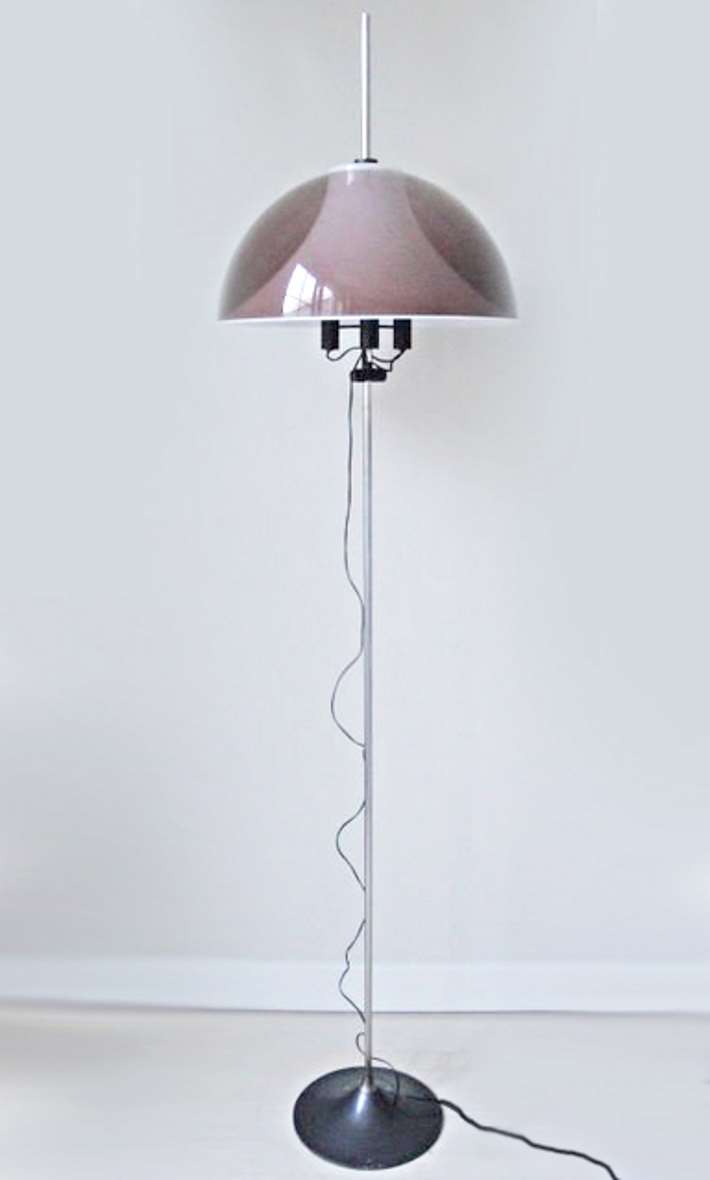Links (external links open in a new window)
Article in the newspaper “Het Vrije Volk” from 1981 about Artimeta’s history – Delpher website
Kuplat pendant lamps on the Innolux website
Arteluce in the Moma Museum New York
Bio of Gino Sarfatti on the Flos website
Gino Sarfatti fanpage on Facebook
Hustadt-Leuchten Arc Floor Lamp – Google
Vintageinfo
Mushroom table lamp – table lamp of this floor lamp
Lamps with similar lampshades
Green acrylic rise & fall pendant lamp
This floor lamp in the 1971 magazine Het Moderne Interieur (The Modern Interior) – Elsevier
The two other lamps are made by Hagoort, another Dutch company.
Artimeta Acrylic Floor Lamp – Floor & Table Lamp – Martinelli Luce
Many thanks to Hans from Ztijl Design for the all the help and the extra pictures.
Many thanks to Frank from nullviernull raum+kommunikation for the pictures of the table and floor lamp together. You can find his shop over here on Ebay.
Artimeta Acrylic Floor Lamp
Materials: White painted round metal base. Cast iron counterweight inside the base. Chrome rod. Chromed metal parts (iron). Smoked brown translucent acrylic mushroom lampshade. White opal acrylic diffuser below. 3 Bakelite E14 sockets.
Height: 170 cm / 11.81”
Lampshade: ∅ 55 cm / 18.89”
Base: ø 30 cm / 18.89”
Electricity: 3 bulbs E14, 3 x 40 watt maximum, 110/220 volt.
Any type of light bulb can be used. Not a specific one preferred.
Period: 1960s, 1970s – Mid-Century Modern.
Designer: Elio Martinelli.
Manufacturer: Martinelli Luce S.P.A. (Società per azioni – Joint-stock company), Via Santa Lucia, 9, 55100 Lucca, Italy. Also sold by Artimeta, Braamweg 43, Soest, The Netherlands.
Other versions: This Artimeta acrylic floor lamp also exists with a chrome or black base and was made in several colours of clear acrylic lampshades. Also another version exist, see below. A table lamp can be found over here.
Martinelli Luce
Martinelli Luce was founded in 1950 by Elio Martinelli in Lucca. Lucca is some 80 km (50 miles) away from Florence and 20 km (13 miles) from Pisa.
Elio Martinelli focused originally on interior design and on lamps for retail outlets, hotels, restaurants, and public houses. Designers that worked for the company: Adolini+Simonini Associati, Gae Aulenti, Sergio Asti, Michel Bouquillon, Marco De Santi – Studio Natural, Angelo Micheli, Studio Orlandini, Luc Ramael, Karim Rashid, Marc Sadler, Studio Lucchi & Biserni, Brian Sironi, Studio 4P1B and many others.
Elio Martinelli
Elio Martinelli was born in Lucca, Tuscany in 1921. He studied as a set designer at the Institute of Fine Arts in Florence. At first he worked for his father’s business within the lighting sector. Soon he began designing and installing his own lighting systems what resulted in the founding of his own company Martinelli Luce in 1950.
Elio Martinelli designed many famous lamps, some of them are still in production. The Biconica, Cavallo Pazzo, Cobra, Foglia, Flex, Geronimo, Nuvole Vagabonde, Serpente, to name the most important.
His works are on display in many design museums around the world. Elio Martinelli worked until his dead in 2004 for the company.
Artimeta
Artimeta was founded by Floris H. Fiedeldij in 1960. Artimeta produced luxury lighting and furniture. Also French designer Mathieu Matégot created several items for Artimeta. Most products were sold in Germany. About 15 people worked for the company. Because Artimeta was booming, Fiedeldij was searching for investors.
Through Mr. W. H. Fockema, a banker, he met Mr. Schoon, director of Transcarbo, a subsidiary of the Oranje Nassau Mines in Heerlen.
A few months later it all went in the wrong direction. The ex-miners, however well-intentioned, could barely handle the fine materials and screws. Customers started to complain about the long waiting times and poor workmanship.
Fiedeldij was confronted with an unimaginable bureaucracy. For example, an order for 1000 screws had to be initialled by 10 people before anything happened.
After he went to complain to the management of Orange Nassau was Fiedeldij dismissed. A little later the factory was closed and transferred to Heerlen.
Only five people were still working and only lamps were imported from Germany and Italy. They no longer produced lamps themselves. The company imported lamps made by Vistosi, Venini, Stilnovo, Martinelli Luce and several other famous companies.
In 1975, Fiedeldij wrote in a bitter letter: “In summary, it can be concluded that an Italian lamp factory is kept alive with Dutch government subsidy and that a Dutch company, which could employ at least 35 people, due to mismanagement has been grounded by the subsidized company in question.”
As the “Het Vrije Volk” newspaper emphasized in the title: A Brabant manufacturer receives an attractive offer. Oranje Nassau takes over his thriving company and says it wants to expand for employment. But the dream is soon over: production was deliberately killed.
After the bankruptcy, the company got a restart under the name Art Light. Today the Artimeta name is back in use and they are importer, producer and distributor of design lighting. Today the are located in Amstenrade.
Origin of this lamp
Lamps in this style were produced by many companies in several variations. It has similarities with the Kuplat (Bubbles) pendant lamp, designed by Yki Nummi and made by Sanka Oy for Stockmann Orno, Finland since 1959.
Elio Martinelli designed his version of this pendant lamp for his company Martinelle Luce from Italy around 1962. In The Netherlands his lamp was sold by Artimeta. Source: Goed Wonen magazine 1962.
Later in the 60s Gino Sarfatti designed one for his own company Arteluce; the Moon pendant lamp, model 2130 from 1969, also made as a tripod floor lamp. Source: Gino Sarfatti. Selected Works 1938 – 1973. Written by Marco Romanelli and Sandra Severi. Published by Silvana Editoriale in 2012.
Also Lyktan from Sweden produced similar lamps. In the UK it was Lumitron who produced comparable lamps designed by Robert Welch. The Italian Harvey Guzzini produced a table lamp. Hustadt-Leuchten from Germany produced an arc floor lamp. Many other companies made variations of this pendant lamp and floor lamp.
Yki Nummi
Yki Nummi (1925-1984) designed his pendant lamp in 1959. It was named Kuplat and was produced by Sanka Oy, today in production by Innolux.
Yki Nummi was born on October 31, 1925 in China as a child of a Finnish missionary. Later on, he studied mathematics and physics in Turku and Helsinki and afterwards he studied design at the School of Applied Arts in Helsinki from 1946 until 1950.
He worked as lighting designer for the Finnish Stockmann-Orno A.B. light factory from 1950 to 1975 and designed hundreds of light fixtures.
The best-known light fixtures are the Modern Art table lamp in 1955 and the Lokki (Sky Flyer or Flying Saucer) pendant light in 1960, currently manufactured by Keraplast and Innojok Oy (Innolux), both Finish companies. In Germany and The Netherlands these lamps are produced by Adelta.
Keraplast and Adelta also produces the Modern Art table lamp. Keraplast has named it the New York table lamp. The Modern Art table lamp was acquired by the MoMA museum in New York, for their collection as a modern European Design Product of 1958, and that’s how the lamp got it’s name.
Yki Nummi participated in a large number of exhibitions and fairs. His works were awarded gold medals at the Milan Triennials of 1954, 1957 and 1960. He received the Pro Finlandia medal in 1971. Nummi also designed spotlights for the world-exhibition in 1958 in Brussels, Belgium.
Yki Nummi summarised his vision by saying ”People don’t buy lamps, they buy light”.
Yki Nummi passed away in Finland, only 58 years old on March 12, 1984.
Stockmann-Orno and Sanka Oy
The acrylic lamps of Stockmann-Orno were made by Sanka Oy, founded in 1950. The company focused on the design of acrylic plastic, which was a new material at this time. Sanka still exists but since the seventies they produce showers.
Stockmann-Orno A.B. was a major lighting factory, founded in 1921 in Helsinki and moved to Kerava in 1937. Later the name changed in Thorn-Orno. The factory closed its business in 2001, but Thorn still exists. Thorn is now part of the Zumtobel Group.
Elio Martinelli
Elio Martinelli was born in Lucca, Tuscany in 1921. He studied as a set designer at the Institute of Fine Arts in Florence. At first, he worked for his father’s business within the lighting sector. Soon he began designing and installing lighting systems that resulted in the founding of his own company Martinelli Luce in 1950. Elio Martinelli designed many famous lamps. Many of them are still in production.
Gino Sarfatti
Gino Sarfatti was born in Venice, Italy in 1912 and studied aero naval engineering at the University of Genoa. Mr. Sarfatti died at Gravedona, Como, Italy in 1984 (some sources say 1985). He founded his company Arteluce in 1935 and sold it to Flos in 1973.
Acrylic: often named by its commercial name: Perspex, Plexiglas, Crylux, Acrylite, Lucite, is a thermoplastic.
